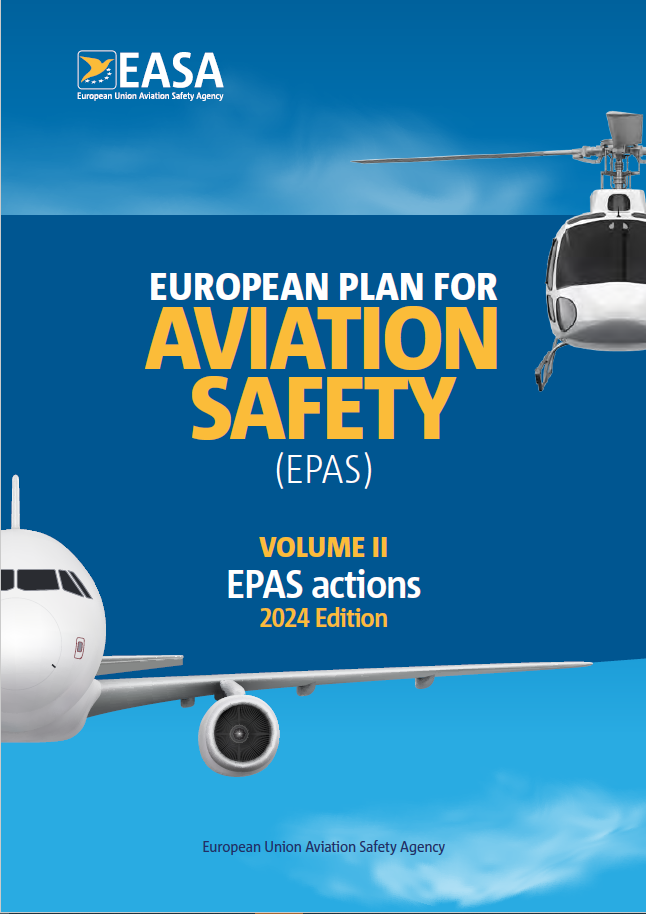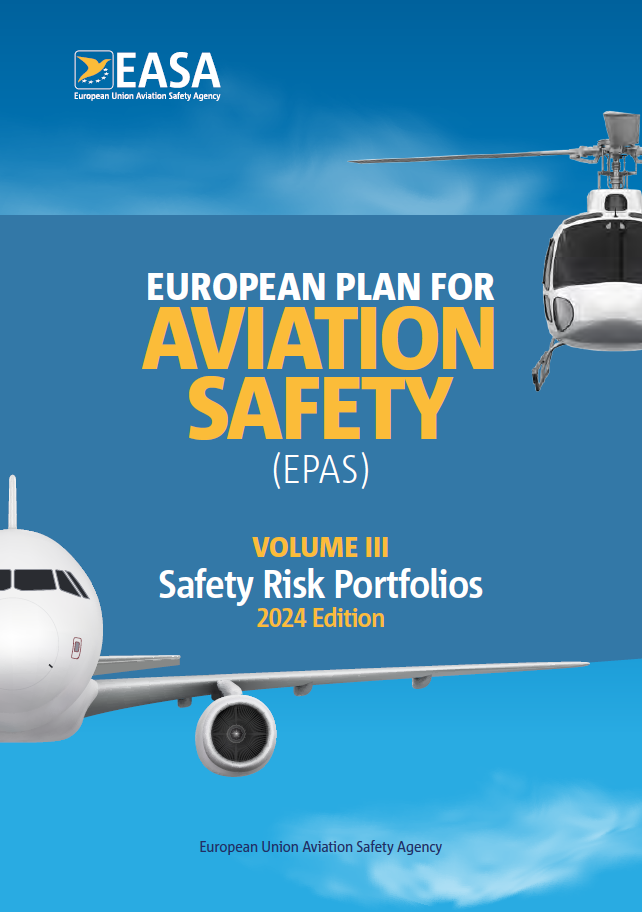The European Plan for Aviation Safety (EPAS), a pivotal component of the European Commission’s strategic vision for aviation safety, outlines the strategic priorities for aviation safety and environmental protection, the primary safety risks and other issues affecting the European aviation safety system and the necessary measures to mitigate those. Designed as the Regional Aviation Safety Plan for EASA Member States, the EPAS reinforces safety management at regional, State and industry levels.
safety and environmental protection, the primary safety risks and other issues affecting the European aviation safety system and the necessary measures to mitigate those. Designed as the Regional Aviation Safety Plan for EASA Member States, the EPAS reinforces safety management at regional, State and industry levels.
Following the adoption of a new reference period and a three-year revision cycle for EPAS Volume I ‘Strategic Priorities’ (2023 – 2025), the 2024 EPAS edition is composed of updates of Volumes II ‘Actions’ and III ‘Safety Risk Portfolios’.
Following the completion of 14 actions in 2023, the EPAS Volume II 2024 edition consists of 164 actions, of which 19 are new, aligning with the strategic priorities agreed for the reference period 2023-2025. Out of these 164 actions, the European Union Aviation Safety Agency (EASA), in consultation with its Advisory Bodies, strategically suspended or delayed certain actions in order to contribute to achieving a balanced budget and to ensure a stabilisation of the rulemaking output for the years to come.
the strategic priorities agreed for the reference period 2023-2025. Out of these 164 actions, the European Union Aviation Safety Agency (EASA), in consultation with its Advisory Bodies, strategically suspended or delayed certain actions in order to contribute to achieving a balanced budget and to ensure a stabilisation of the rulemaking output for the years to come.
Noteworthy updates of Volume II ‘Actions’:
- Introduction of new Rulemaking Tasks (RMTs):
- to address safety concerns related to erroneous take-off parameters and position errors in Commercial Air Transport,
- to create a regulatory framework for Artificial Intelligence Trustworthiness, and
- to ensure the safe integration of Higher Airspace Operations.
- New Implementation Support Tasks (IST):
- facilitating the roll-out of the recently adopted ATM/ANS ground equipment conformity assessment regulatory framework and the U-Space regulations, respectively.
- Launch of new Research projects (RES):
- targeting significant safety issues identified through the European Safety Risk Management process,
- promoting systems safety and resilience,
- exploring health safety measures in aircraft, and
- preparing for the safe integration of new technologies.
- Introduction of a new Member State Task (MST):
- to improve data quality in occurrence reporting.
Volume III ‘Safety Risk Portfolios’ underwent a full review that was aligned with the European Safety Risk Management process. The 2024 edition introduces dedicated portfolios for airworthiness, sailplanes and balloons, reflecting EASA’s commitment to a holistic approach to safety management. Collaborating with its safety partners, EASA identified 35 new safety issues and diligently reviewed the relevance and priority of existing ones, resulting in the removal of 19 safety issues in the 2024 edition. Reflecting EASA’s proactive stance on climate change, safety issues susceptible to its effects, particularly weather hazards, continue to be explicitly tagged. Finally, the 2024 edition of EPAS Volume III provides the latest list of cross-domain higher-risk safety issues as well as an updated overview offering insights on how safety issues contribute to the various key risk areas.
The release of the 2024 edition underscores EASA's unwavering commitment to advancing aviation safety in Europe.
EPAS explained
This short video explains what EPAS is and how it is developed.